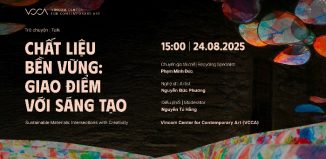[TGS – Giới thiệu nghệ sĩ] Phạm Đình Tiến & Phạm Hà Ninh
The Grapevine Selection – Lựa chọn của Grapevine, được khởi xướng bởi người sáng lập Hanoi Grapevine – nghệ sĩ Canada Brian Ring vào cách đây đúng 10 năm, năm 2013. Chuỗi triển lãm Lựa Chọn của Grapevine là sáng kiến nằm trong kế hoạch thực hiện sứ mệnh mà Hanoi Grapevine đặt ra là quảng bá cho nghệ thuật và văn hóa Việt ở cả trong và ngoài nước.
Bên cạnh đó, The Grapevine Selection 2023 là thử nghiệm đầy táo bạo khi đặt các tác phẩm đương đại của những nghệ sĩ nổi bật, từ hội họa, điêu khắc tới sắp đặt giữa một không gian đậm chất di sản văn hóa như Văn Miếu – Quốc Tử Giám tới một không gian công nghiệp hiện đại tới tinh giản cao cấp như Audi Charging Lounge. Hanoi Grapevine mong muốn sự thay đổi không gian không làm giảm đi trải nghiệm thưởng thức nghệ thuật của khán giả, trái lại sẽ cộng hưởng với những tác phẩm mang vẻ đẹp độc đáo, gia tăng sự phong phú giác quan trong việc kết hợp xuyên suốt giữa các không gian và chủ đề triển lãm, một xu thế sẽ bùng nổ tại Việt Nam trong tương lai.
Năm 2023, The Grapevine Selection tuyển chọn 53 tác phẩm từ 16 nghệ sĩ thuộc các lĩnh vực: Hội họa, Điêu khắc và Sắp đặt với sự cố vấn từ Hội đồng nghệ thuật.
Nghệ sĩ Phạm Đình Tiến
Phạm Đình Tiến sinh năm 1988 tại Lâm Đồng. Năm 2012, Đình Tiến tốt nghiệp Cử nhân chuyên ngành Điêu khắc. Hiện nay, Đình Tiến là giảng viên khoa Điêu khắc tại Đại học Mỹ thuật Thành phố Hồ Chí Minh và đã tham gia hàng loạt các triển lãm nhóm, như: Triển lãm Điêu khắc Toàn quốc lần thứ 5 tại Bảo tàng Mỹ thuật Hà Nội (2013), Triển lãm Mỹ thuật Trẻ tại Bảo tàng Mỹ thuật Thành phố Hồ Chí Minh (2013), “Come to [what] end?” tại San Art (2014), “Chung” tại PongDang Gallery (2014), Hội nghị chuyên đề Điêu khắc Quốc tế (2015), Triển lãm “Hanoi – Saigon” tại trường Đại học Kiến trúc Hà Nội (2016), “TỎA” tại Trung tâm Nghệ thuật đương đại Vincom (VCCA) (2017), và “Tranh lụa và điêu khắc nhỏ” tại VCAA (2018). Năm 2022, Phạm Đình Tiến đã tổ chức triển lãm cá nhân đầu tiên của mình mang tên “Wandering age” tại Craig Thomas Gallery, Thành phố Hồ Chí Minh.
Anh Nông Dân May Mắn
Việt Nam với văn hóa lúa nước hàng nghìn năm nhưng tôi thường thấy các hiện vật bằng vàng thường mang hình tượng của vua chúa, tôn giáo, rất ít thấy các hiện vật như vậy trong vóc dáng của một người thường dân. Tác phẩm là một tượng một anh nông dân dựa theo hình ảnh được chụp từ thế kỷ 19 được đúc lại bằng vàng để xem chất liệu quý có mang lại hào khí như hình tượng đế vương cho anh nông dân?
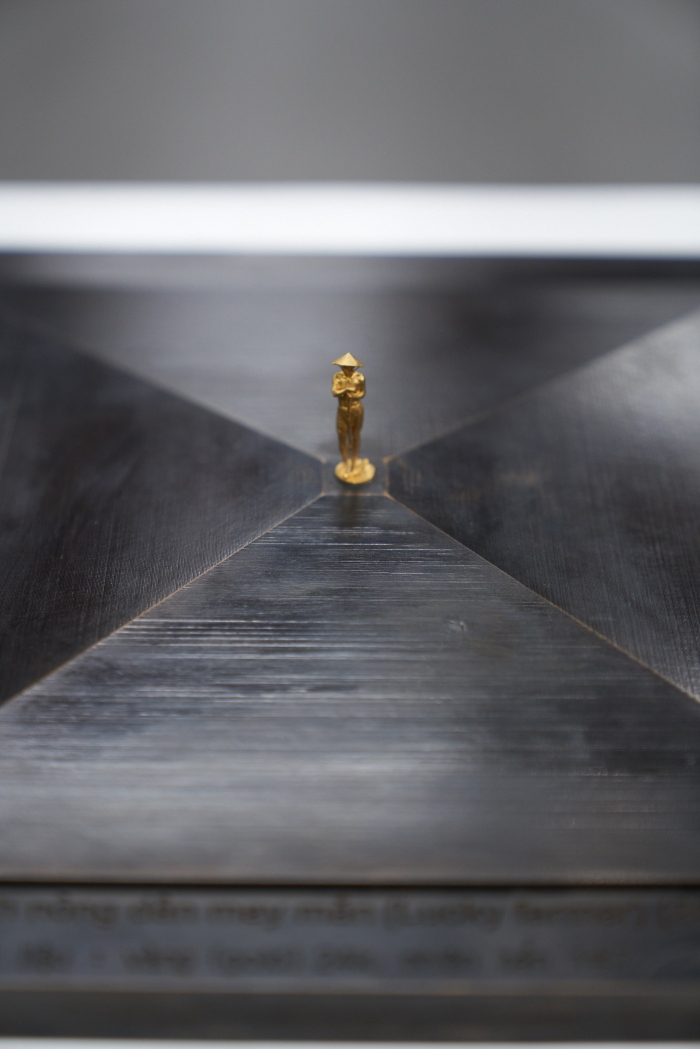
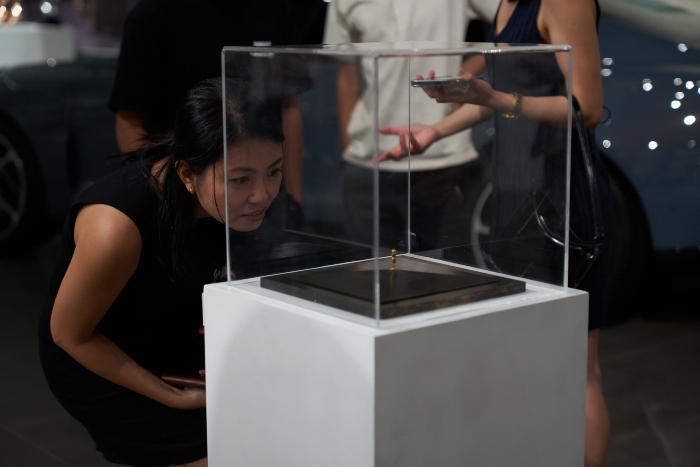
Giờ Giới Nghiêm
Tác phẩm có chút hình tượng từ thần dưới vóc dáng chi tiết của một người thường nhật. Con trâu bạn thân của nhà nông có sức mạnh chăm chỉ, chậm nghĩ. Người phụ nữ là mẹ, là vợ, là con gái của người nông dân, người sống trong luật và lưu giữ luật.

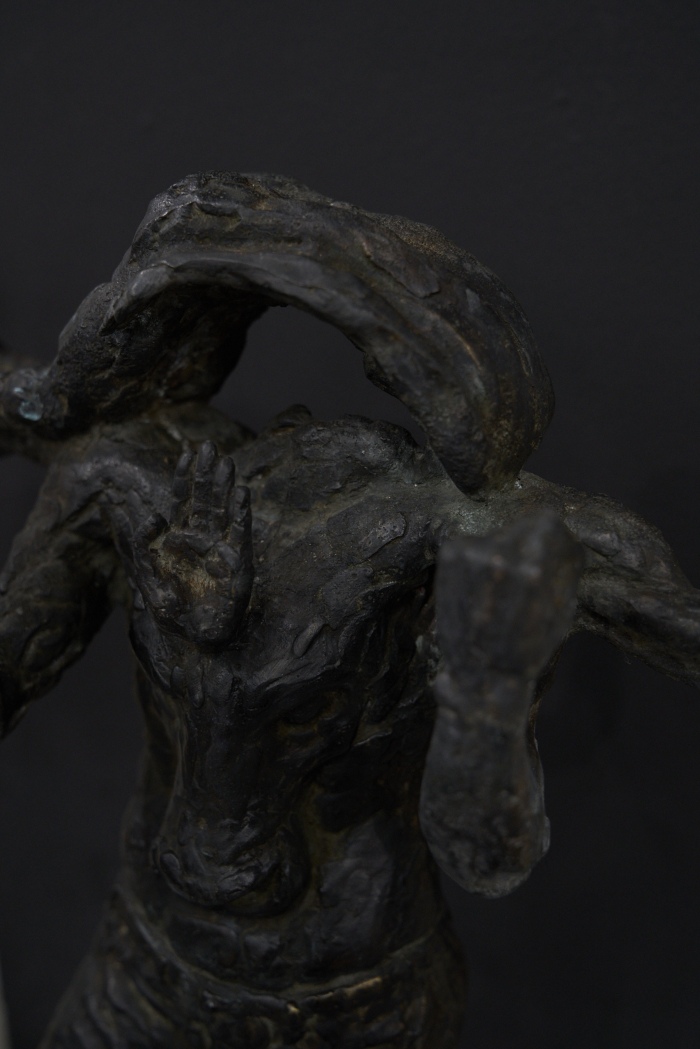
Nghệ sĩ Phạm Hà Ninh
Phạm Hà Ninh sinh năm 1991 tại Hà Nội, là một nghệ sĩ tạo hình. Phạm Hà Ninh tốt nghiệp Đại học Mỹ thuật Việt Nam năm 2014 và Thạc sĩ Mỹ thuật tại Học viện Mỹ thuật bang Pennsylvania, Hoa Kì năm 2018. Hà Ninh sử dụng các chất liệu bao gồm hội hoạ, điêu khắc và in lưới. Sáng tác của Hà Ninh bắt đầu với những trăn trở của một người trẻ tuổi thuộc thế hệ 9x, sinh ra trong một thời kì Việt Nam trải qua những thay đổi nhanh chưa từng có của truyền thông, công nghệ thông tin, và toàn cầu hoá. Vì vậy, Hà Ninh lựa chọn các phương pháp biểu đạt truyền thống như là một phương tiện tự nhiên để đi tìm căn tính của mình. Ngoài ra, Hà Ninh cũng tổ chức một số dự án cá nhân với hi vọng góp phần phát triển cộng đồng nghệ thuật “nội địa.” Hà Ninh đã tham dự một số Triển lãm của Nhà nước cũng như của các không gian nghệ thuật độc lập. Hà Ninh được trao Huy chương bạc Hội thi Tài năng trẻ Học sinh, Sinh viên các trường Văn hoá Nghệ thuật lần thứ II năm 2014 tại Việt Nam và giành được học bổng uy tín nhất, The Trustee Scholarship, của Học viện Mỹ thuật Bang Pennsylvania, Hoa Kì năm 2016.
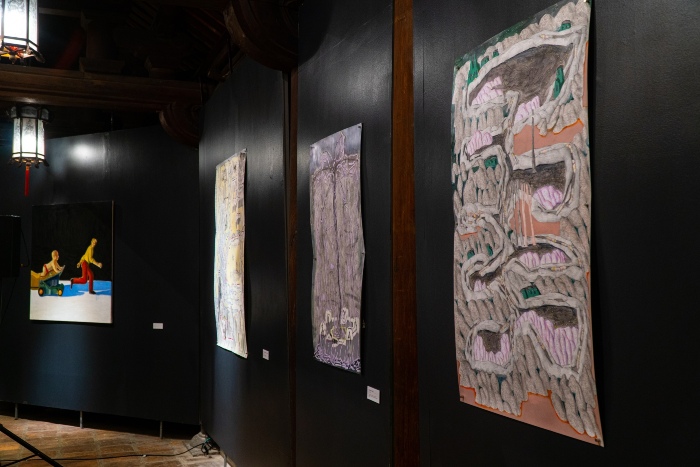

“Nghệ thuật của tôi khai thác những hình dung về các lãnh thổ ở phương xa được xây dựng một cách gián tiếp qua các phương tiện trung gian. Từ năm 2017 đến nay, tôi thực hiện một dự án dài hạn mang tên Đất Mình (My Land), nơi tôi thiết kế một thế giới theo quy tắc riêng, không tương ứng với bất kỳ nền văn hóa nào đã biết trong lịch sử loài người. Dự án này bao gồm các bức tranh, các tác phẩm điêu khắc, các bức vẽ và các trò chơi điện tử, lần lượt tương ứng với bản đồ, hiện vật, văn bia và sự tích kể về một lãnh thổ tưởng tượng. Lãnh thổ này có các hệ thống logic, ngôn ngữ và đo lường riêng không liên quan tới các hệ thống của con người, nhưng chúng lại có thể vận hành hoàn chỉnh. Tôi muốn xem liệu tôi có thể thuyết phục người xem bao nhiêu phần tin rằng vùng đất này tồn tại. Đất Mình là nơi mọi kinh nghiệm cá nhân của bất kỳ người xem nào cũng bị vô hiệu. Họ phải từ bỏ hoàn toàn di sản văn hóa của mình để học mọi thứ lại từ đầu trong thế giới này.”
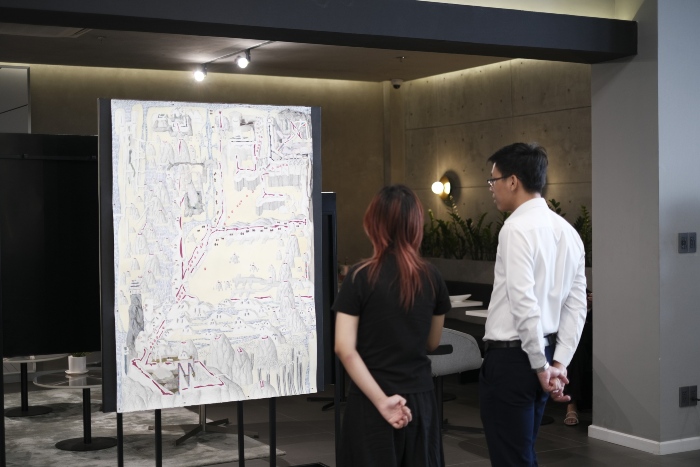
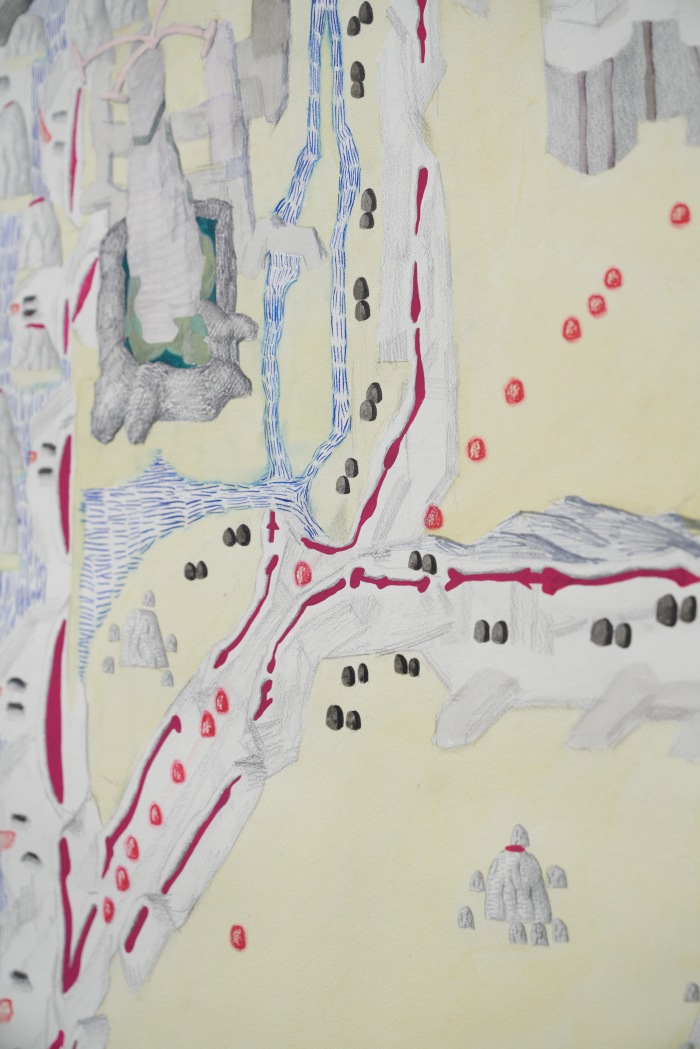
* Photo credits: Mắt Bét, Trần Thảo Miên


